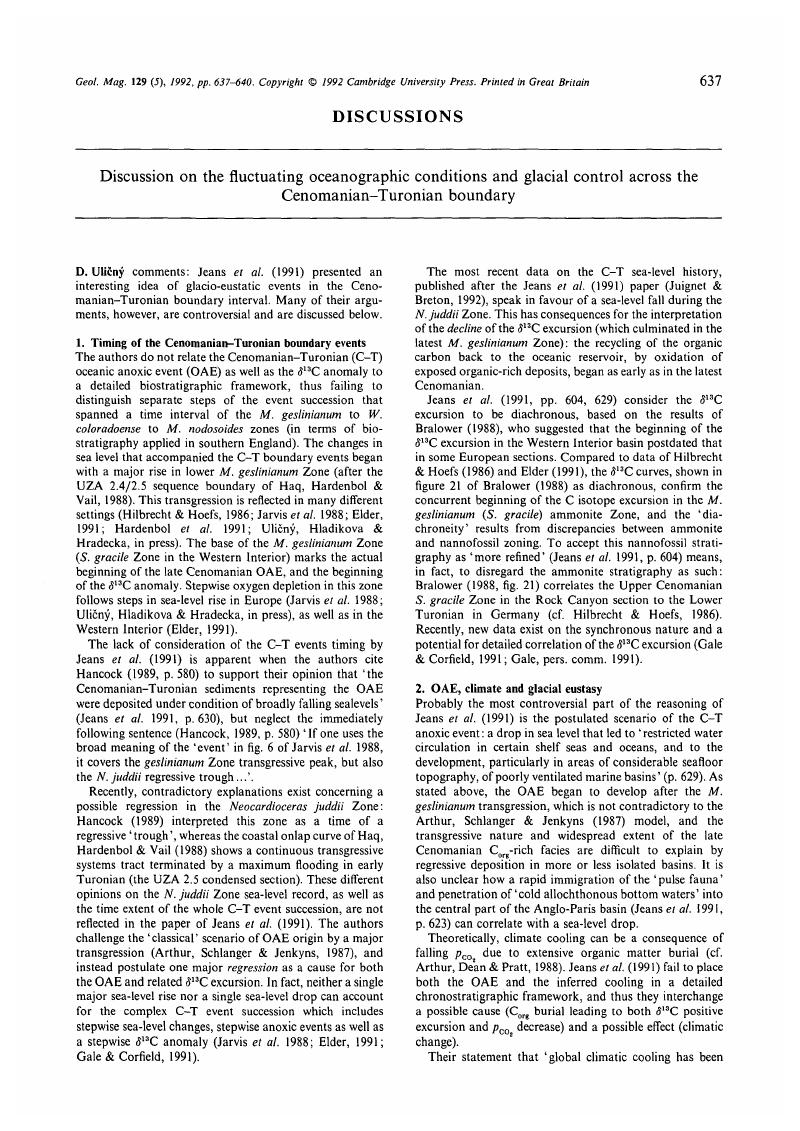Crossref Citations
This article has been cited by the following publications. This list is generated based on data provided by Crossref.
Peryt, Danuta
Wyrwicka, Krystyna
Orth, Charles
Attrep, Moses
and
Quintana, Leonard R.
1994.
Foraminiferal changes and geochemical profiles across the Cenomanian/Turonian boundary in central and south‐east Poland.
Terra Nova,
Vol. 6,
Issue. 2,
p.
158.
Tocher, Bruce A.
and
Jarvis, Ian
1995.
Dinocyst distributions and stratigraphy of two Cenomanian–Turonian boundary (Upper Cretaceous) sections from the western Anglo-Paris Basin.
Journal of Micropalaeontology,
Vol. 14,
Issue. 2,
p.
97.
Uličný, David
Hladı́ková, Jana
Attrep Jr, Moses J
Čech, Stanislav
Hradecká, Lenka
and
Svobodová, Marcela
1997.
Sea-level changes and geochemical anomalies across the Cenomanian–Turonian boundary: Pecı́nov quarry, Bohemia.
Palaeogeography, Palaeoclimatology, Palaeoecology,
Vol. 132,
Issue. 1-4,
p.
265.
Lehmann, Jens
1999.
Integrated stratigraphy and palaeoenvironment of the Cenomanian-Lower Turonian (Upper Cretaceous) of northern Westphalia, North Germany.
Facies,
Vol. 40,
Issue. 1,
p.
25.
Ramkumar, Mu.
Stüben, D.
and
Berner, Z.
2011.
Barremian–Danian chemostratigraphic sequences of the Cauvery Basin, India: Implications on scales of stratigraphic correlation.
Gondwana Research,
Vol. 19,
Issue. 1,
p.
291.
Ramkumar, Mu.
and
Berner, Z.
2015.
Chemostratigraphy.
p.
273.
Bragina, L. G.
2016.
Evolution of radiolarians in the late Albian–Campanian.
Stratigraphy and Geological Correlation,
Vol. 24,
Issue. 5,
p.
527.
2017.
Eustasy, High-Frequency Sea Level Cycles and Habitat Heterogeneity.
p.
77.



